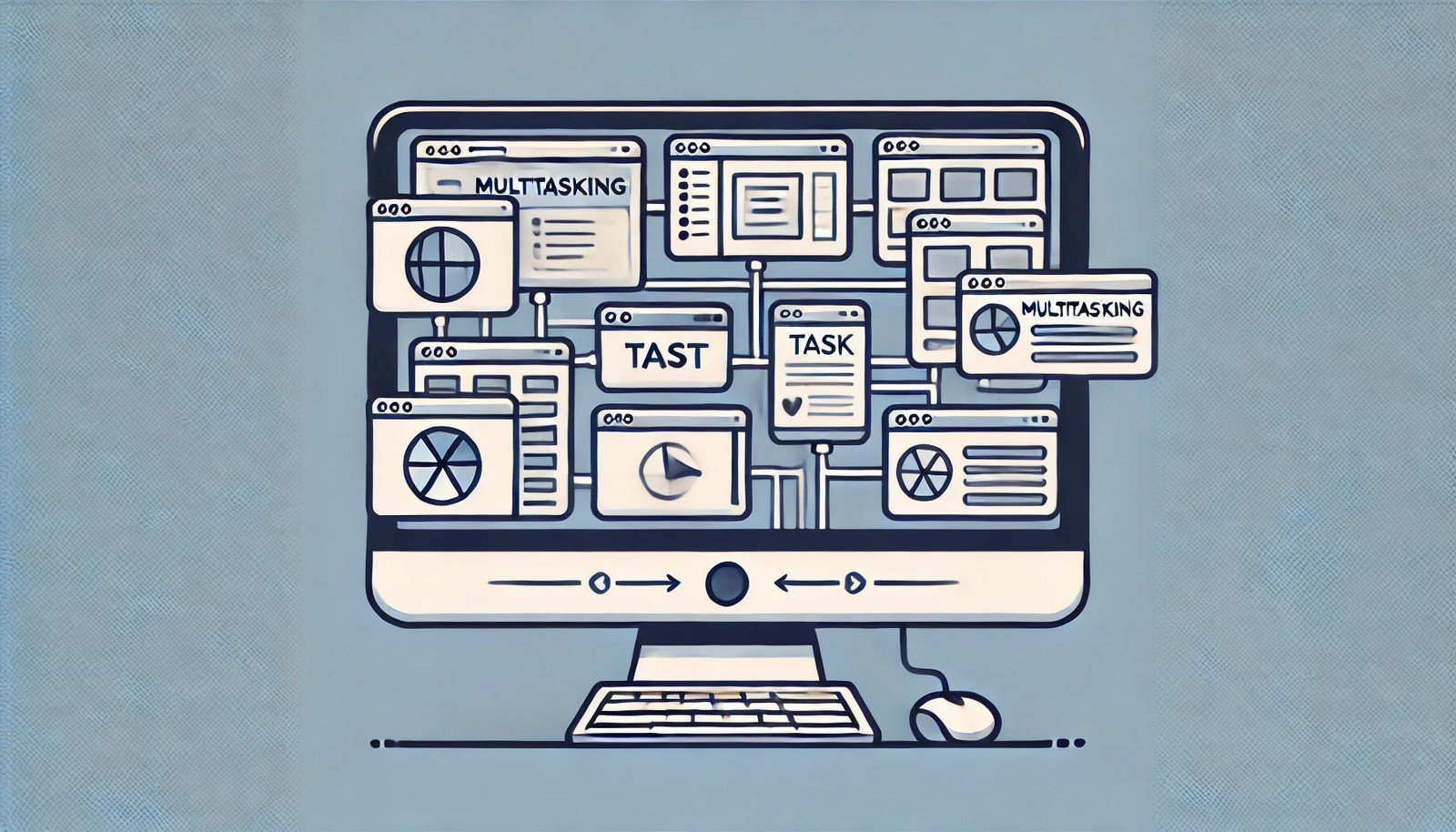Multitasking
 (Representational Image | Source: Dall-E)
(Representational Image | Source: Dall-E)
Quick Navigation:
- Multitasking Definition
- Multitasking Explained Easy
- Multitasking Origin
- Multitasking Etymology
- Multitasking Usage Trends
- Multitasking Usage
- Multitasking Examples in Context
- Multitasking FAQ
- Multitasking Related Words
Multitasking Definition
Multitasking in computer software refers to the ability of a system to execute multiple tasks (processes) simultaneously. This is achieved by sharing system resources such as CPU time among multiple tasks. There are various types of multitasking, such as preemptive and cooperative, each defining how tasks share computing power. Multitasking enables modern operating systems to run several programs at once, enhancing user productivity.
Multitasking Explained Easy
Think of multitasking like spinning plates on sticks—each plate represents a task. You quickly move from one plate to another, keeping them all spinning. Computers do something similar by switching between tasks so quickly that it seems like they're doing everything at the same time.
Multitasking Origin
The concept of multitasking originated in the 1960s with early mainframe computers that could run several tasks at once to improve efficiency. Early multitasking was primarily used in large computing systems for scientific calculations and data processing.
Multitasking Etymology
The word "multitasking" comes from combining "multi" (meaning many) and "tasking" (derived from "task"), indicating the performance of multiple tasks concurrently.
Multitasking Usage Trends
Multitasking has become a standard feature in modern operating systems like Windows, macOS, and Linux. Its importance has grown with the rise of personal computing, mobile devices, and cloud services. Today, multitasking is critical for productivity software, real-time systems, and multi-user environments.
Multitasking Usage
- Formal/Technical Tagging:
- Operating Systems
- Process Management
- Resource Allocation - Typical Collocations:
- "multitasking operating system"
- "preemptive multitasking"
- "task scheduling"
- "parallel processing"
Multitasking Examples in Context
- A computer multitasks when it plays music, downloads a file, and runs a word processor at the same time.
- In smartphones, multitasking allows you to switch between apps without closing them.
- Operating systems like Windows use multitasking to let users open and manage multiple applications simultaneously.
Multitasking FAQ
- What is multitasking in computer software?
Multitasking is the ability of a computer system to run multiple tasks at the same time by sharing system resources. - How does preemptive multitasking differ from cooperative multitasking?
Preemptive multitasking allows the operating system to control task scheduling, while cooperative multitasking relies on tasks to yield control voluntarily. - Why is multitasking important?
It improves efficiency and allows users to perform multiple operations simultaneously, enhancing productivity. - What are some examples of multitasking in daily life?
Examples include using a computer to browse the web while listening to music or switching between different smartphone apps. - Can multitasking slow down a computer?
Yes, multitasking can reduce system performance if too many tasks are running and competing for limited resources. - Which operating systems support multitasking?
Popular systems like Windows, macOS, Linux, Android, and iOS support multitasking. - What is task scheduling in multitasking?
Task scheduling is a process in which the operating system allocates CPU time to tasks to ensure they run smoothly. - Is multitasking the same as parallel processing?
No, multitasking switches between tasks quickly, while parallel processing runs tasks truly simultaneously on multiple processors. - How has multitasking evolved over time?
It has evolved from simple time-sharing systems to modern operating systems that support advanced multitasking features. - Can multitasking lead to errors in software?
Yes, poorly managed multitasking can cause errors like race conditions, deadlocks, and resource conflicts.
Multitasking Related Words
- Categories/Topics:
- Operating Systems
- Task Scheduling
- Real-Time Systems
Did you know?
Multitasking was first introduced in IBM’s System/360 in the 1960s, revolutionizing how computers managed resources and setting the stage for modern operating systems.
PicDictionary.com is an online dictionary in pictures. If you have questions or suggestions, please reach out to us on WhatsApp or Twitter.Authors | Arjun Vishnu | @ArjunAndVishnu

I am Vishnu. I like AI, Linux, Single Board Computers, and Cloud Computing. I create the web & video content, and I also write for popular websites.
My younger brother, Arjun handles image & video editing. Together, we run a YouTube Channel that's focused on reviewing gadgets and explaining technology.



Comments powered by CComment